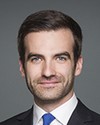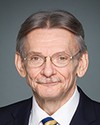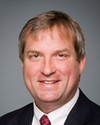In light of what we have learned since, I am not sure that today we would have acted the same way.
I would say that in keeping with standard project management practices and principles, we would have had a single senior-level official, at least at the assistant deputy minister level, in charge of the project, and equally a master implementation plan in place.
That, regrettably, was not the case when the project was established. That is noted. That is what it is; we can't change that. The focus has been to address the backlog, moving forward in as aggressive and positive a fashion as possible. I would submit that the measures we put in place are in line with that. The risks at the time of implementation were understood. The question remains as to whether we would have been better off to wait or better off to implement it.
Ultimately, based upon what we have learned to date, we were better off to implement it, though we acknowledge there are challenges associated with that. Had we waited, first of all, we would have had a more serious backlog than we have now. Second—and this is an important point—if we had waited for implementation, people who retired in the intervening year or two or three years prior to implementation would have been precluded from applying for the plan. We would have precluded some people's access to a pension.
On balance, I would submit that we made the right decision to proceed, acknowledging the challenges, to get as many people, if I could use the term, under the tent as possible early on.




